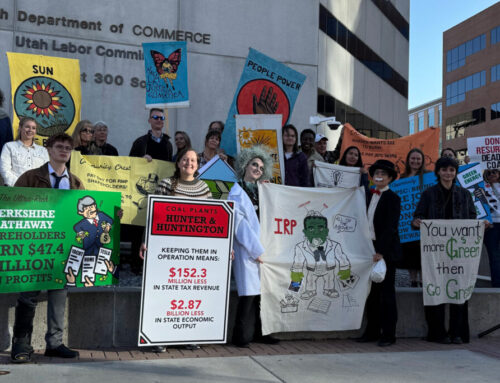California Lowers Cannabis Excise Tax But Is It A Win?
October 31, 2025
In September 2025, California Governor Gavin Newsom signed Assembly Bill 564 (AB 564) into law, reducing the state’s cannabis excise tax from 19% to 15%. The change will take effect on January 1, 2026, and will remain in place through 2029 unless modified through future legislation.
The bill was authored by Assemblymember Matt Haney (D-San Francisco) and follows years of concern from legal cannabis operators about pricing, competition from the illicit market, and unsustainable challenges in the state’s regulatory framework.
Only time will determine whether or not this is a significant win for the industry. Most industry insiders feel more needs to be done to fix the legal market in California. Without further reforms, more companies may go into receivership and/or enter bankruptcy in California. When elected officials use the word “collapse” and regulators cite the need to “stabilize” the market, it’s probably a sign that the legal market is in trouble.
Background is Complicated
California’s cannabis excise tax was originally set at 15% in 2016 under Proposition 64, which legalized weed for adults 21 and over. A volume based cultivation tax was also imposed at the time of adult use legalization.
In 2022, the cultivation tax was eliminated as part of a policy change within Assembly Bill 195 (AB 195) designed to help struggling cannabis farmers.
The state also shifted the point of excise tax collection from licensed distributors to retailers. As part of the stipulations for AB 195, and to ensure consistent tax revenue after the elimination of the cultivation tax, the California Department of Tax and Fee Administration (CDTFA) raised the effective rate to 19% on July 1st of this year.
Now AB 564 eliminates that 4 point adjustment, restoring the tax rate to 15% on January 1, 2026. The measure also includes provisions requiring the Department of Finance and CDTFA to issue biennial reports assessing the tax’s impact on compliance levels, market performance, and state revenues.
In a press release, Assemblymember Haney emphasized the practical purpose of the reform.
“The legal cannabis industry in California is collapsing under the weight of illegal competition and overtaxation,” said Haney. “AB 564 helps give licensed businesses a fair shot by reducing a tax that has become an obstacle to compliance and survival.”
He explained that while some state revenue loss is expected short term, stabilizing the legal industry could strengthen overall tax collection long-term and protect the integrity of California’s cannabis regulations.
Cannabis Industry Reaction
The cannabis industry has universally supported the bill. Caren Woodson, executive director of the California Cannabis Industry Association (CCIA), underscored the importance of the excise tax reduction in a statement issued shortly after the bill was signed.
“Lowering the excise tax from 19% to 15% is a targeted, evidence-based response to the market instability we’ve been hearing about for years,” said Woodson. “It sends a clear signal that California is committed to supporting a functional, sustainable cannabis economy.”
Retail operators have long contended that high pricing drives consumers to unlicensed sellers, further undermining the efforts of tax-compliant businesses.
“Reducing the excise tax moves us closer to price parity,” said Jerred Kiloh, president of the United Cannabis Business Association (UCBA). “That’s essential if policymakers really want to bring consumers back into legal shops.”
Some social equity advocates have framed the move as only a partial step toward improving the legal market. Many equity applicants and operators work on thin margins and face steep local taxes and regulatory fees in addition to state-level tax obligations.
Amber Senter, co-founder of Supernova Women, commented in MJBizDaily that “lowering the excise tax is a step in the right direction for equity operators, but the state must also continue to address access to capital, permitting delays, and local license caps.”
Vince Ning, CEO and founder of Nabis cannabis distribution company—the state’s largest—also felt more needs to be done.
“This is a positive step forward, but it’s just one piece of the puzzle,” said Ning. “In some jurisdictions, consumers face cumulative tax rates approaching 50% on legal cannabis—conditions that fuel illicit sales and undermine licensed businesses.”
As Ning indicates, local jurisdictions can place their own cannabis tax under Proposition 64. In some areas, that tax can be as high as 10% or more. This gets placed on top of the excise tax. Cannabis products are also subject to state sales tax which hovers near 10% in many jurisdictions across the state.
For example, if a joint of cannabis costs $10, a 15% excise tax takes that to $11.50 and another 10% of local taxes (as in Los Angeles) hikes it to $12.50. Add a 10% sales tax on top of that and now that joint costs $13.50. If a consumer decides to buy 10 of those joints, that consumer is now paying $35 in total taxes.
Industry players have complained for years that this cumulative taxation drives cannabis consumers to the underground market. The data suggests they may be correct. Even by the Department of Cannabis Controls (DCC) own estimates, the underground market still has about 60% market share in California.
Regulators’ Perspective
The DCC and CDTFA are now responsible for implementing the new rate and will monitor its effects over a four-year period. DCC Director Nicole Elliott offered a measured view on the bill.
“This adjustment will not solve every challenge, but aligns with broader efforts to stabilize the legal market,” said Elliot. “We continue to prioritize enforcement, public health, and equitable access to resources within the regulated system.”
Conclusion and Context
Whenever taxes are lowered in a high-tax state like California, it’s a win for operators and consumers. The question remains, is it enough? AB 195 and AB 564 took years for advocates and industry lobbyists to get over the finish line.
Other industries like alcohol, tobacco, and firearms have lower excise taxes than cannabis. Firearms are taxed at 11% and alcohol is taxed by volume not by gross sales. This makes the tax on a glass of wine about a penny. On a pure scientific basis, those products are more harmful to human health than cannabis, which may indicate something is out of balance with excise taxes for weed in California.
Many retailers I know are already in debt to the CDTFA on their excise taxes. In many jurisdictions in California, a large amount is owed in local cannabis taxes that cannot be collected ($400 Million in the city of LA alone). The overall sales in the legal market continue to fall in California every year for the last several years. And only 20% of all cannabis companies in the United States are profitable, according to economist Beau Whitney.
While AB 564 may be a win for the industry, many operators feel it’s more symbolic than significant. Maybe AB 564 will bring customers back into the shops. Maybe this is all that needs to be done. As I’ve written before, only time will tell and the clock is ticking on the legal cannabis market in California.
Search
RECENT PRESS RELEASES
Related Post



